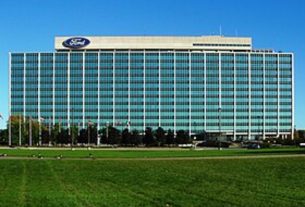Nick Barber and colleagues share a new invasive plant management technique to better control invasive species and improve biodiversity.
Controlling invasive plants can be a never-ending battle for land managers, and this work is costly — not just in materials like expensive herbicide, but costly in time as well. This is especially the case when invasive control efforts overlap with other management responsibilities. Managers have to balance these costs with effectiveness (does an eradication method work), applicability (when and where it will work) and specificity (the amount of damage to nontarget plants).
Amur honeysuckle (Lonicera maackii) is an invasive shrub that flourishes along forest edges and in open woodlands. Like many invasive woody plants, it shades out native flora with its early leaf-out and prolonged leaf retention, and when left uncontrolled, it can produce a near monoculture that threatens biodiversity.

Native to eastern Asia, Amur honeysuckle has become a conservation problem across much of the eastern and central USA and southeastern Canada. Land stewards everywhere have implemented a variety of different eradication methods, including hand pulling, cut-and-treat with herbicide, foliar-applied herbicide from backpacks or helicopters, basal bark herbicide treatments, and prescribed fire.
We studied the effectiveness of basal bark treatments and prescribed fire to control honeysuckle, including nontarget damage and the subsequent recovery.
Our study
We tracked 800 honeysuckle plants across five woodland plots in northern Illinois, USA, that were treated in autumn, winter, early spring, or late spring, or untreated. Herbicide (Garlon 4 Ultra) was sprayed around the bases of individual plants using a backpack sprayer, which was both quick and easy.
The following autumn, we checked plants and were excited to find that all application times were equally effective, killing >98% of Amur honeysuckle across all treatment seasons. Only 2.5% of untreated plants died, and prescribed fire did not affect these results. Land managers’ time commitments vary across the year, so there is value in knowing that they have the flexibility to treat invasive species in a less-busy season without sacrificing effectiveness.
Another important finding was that it takes time for the herbicide to be fully effective: a subset of individuals across treatments was checked shortly after the final treatment, and 75% of treated plants were still alive, although the vast majority of these died by the next fall.

We also examined longer term impacts on surrounding vegetation to understand a “ring of death” frequently observed around the stems of a sprayed plant.
Although this dead zone, about 25 cm in radius around each plant, occurred regardless of treatment season or fire, the area surrounding sprayed plants showed increased vegetative cover and increased native cover over the next years. This contrasts with untreated plants, which lost total native cover in this time.

However, treatments somewhat simplified communities surrounding treated honeysuckle, reducing richness by ~2 species, with the smallest loss around plants treated in early spring. There did not appear to be any species or group of species that were particularly susceptible, but managers may want to consider targeted seeding around treated plants to compensate for these losses.
Future implications
In summary, our results show that basal bark treatments are another addition to managers’ invasive control toolbox, with advantages and disadvantages. Treatments were extremely effective across all investigated seasons, and prescribed fire did not interfere with herbicide effects.
Impacts on surrounding plants suggest caution may be warranted if there are very sensitive species of conservation concern nearby. The table below compares basal bark treatment to other common strategies for eradicating Amur honeysuckle and likely applies to other similar invasive shrubs:

Read the full article: “Basal bark herbicide treatment of Lonicera maackii (Amur honeysuckle) is effective regardless of application timing, with limited nontarget effects on native plant diversity” in Ecological Solutions and Evidence.
